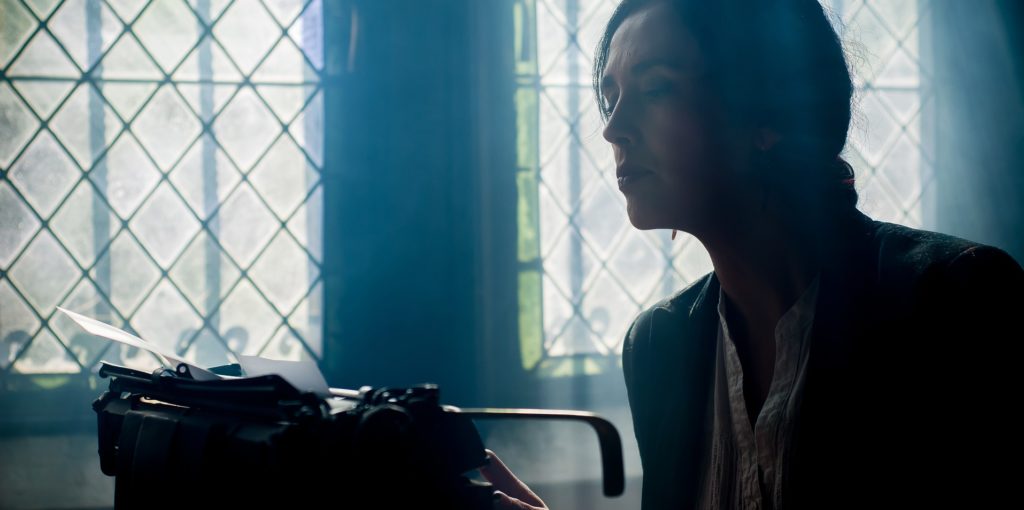Are you ready to write a Middle Grade novel? In this article we will explore the genre in order to learn which age group to target, what themes to explore, and what kind of word count you need in order to craft a strong Middle Grade book. You can walk away feeling confident you have the tools to take your ideas to paper and write your Middle Grade masterpiece.
Defining Middle Grade Novels
- readership : 7–13 years
- word count : between 30,000–55,000 words
- characters ages : 9–14 years
The Golden Age of Reading
Often times Middle Grade is called the Golden Age of Reading…why? Because the genre has the largest readership of any other genre, including adults. Kids this age read, and they read a lot.
Remember, you’re spanning a diverse age group here. What may work for an 8-year-old likely won’t work for a 12-year-old. So although we bundle it all into Middle Grade, the genre actually has two sub groups. This is important to understand in order to know your audience when writing, and thus appropriately adjust your themes and word count. Plus, you’ll be able to clarify in your query to agencies when you’re ready. Otherwise, it’s all Middle Grade and it all counts.
Two Sub-Categories
- Lower Middle Grade
Lower Middle Grade books tend to be read by kids aged 7–10 years old and have a word count on the lower end. There may be a sub plot or two, but the main plot will dominate the focus, and all themes will certainly be G-rated.
- Upper Middle Grade
Upper Middle Grade books can have a longer word count and will be read by children aged 10–13 years old. There will likely be a subplot or two that help to carry the story in a substantial way and the themes may be a bit more complex, or PG-rated.
Why is Middle Grade so Popular
Middle Grade novels are the new rage…everyone loves them––publishers and agents are on the prowl for the next great Middle Grade book, and if you’ve got a series…even better. Let’s look at why.
Spans a diverse age group
Middle Grade readers are going from an egocentric existence to an altruistic one, so there is a huge leap from free play and imagination to an overwhelmingly rapid sense of self awareness––you are catching these readers right as the change begins. Because of these changes, these readers tend to be thirsty for knowledge and hungry for adventure, and so you have a diverse group of individuals ready to read your book.
A relatively quick read or a longer indulgence
Because of the diverse audience, you have some leeway when it comes to your length and themes (see the two sub categories above). You can target the older readers, those creeping into puberty, or the younger readers, those who are no longer into baby things but not ready to play grown up quite yet. This means you can work your themes into the age group that is most appropriate, and develop your story from there.
Series work well
Series work really well for the Middle Grade genre because the readership is so voracious at this age. Often, once readers are hooked on a character or world, they want more and more. Not only is this great for your audience, but publishers love it too. They are signing more than one book when they choose your Middle Grade series…they get three, four, maybe even more books that they know they can sell, making you as a return author low risk and all the more desirable. Think Percy Jackson or Harry Potter.
The themes are fairly innocent and approachable
That’s right…no one is kissing. Which means there’s less controversy when it comes to relationship themes. These books are easy for parents and schools to pick up and pass out. Your main character will have a bestie and maybe an innocent crush, but nothing more. You’ll be able to focus on the adventure and thrill of the story rather than the complicated rollercoaster of emotional themes you would be tackling in a YA novel. The same goes for exploring violence, big idea issues, and other themes. Let’s look at those in more detail.
Themes and What to Write About
Middle Grade novels span the compass when it comes to subjects and themes, as well as sub-genres. Fantasy, Adventure, Girls’ or Boys’ Books, Mystery, Magic Realism, even some loose Sci-Fi, you’ve got so much to work with!
Humor
Make us laugh! Kids love to laugh (heck, so do adults). But this age group in particular really connects to humor. The Diary of a Wimpy Kid Books are perfect examples, where every single page has readers laughing out loud. Age appropriate humor may be hard for us as adults to grasp, so be sure to run your jokes by your kid audience. Think over-the-top wackiness, slapstick silliness, and obvious irony while you’re developing your laugh sequence.
Romance
You’re not going to find any hot and heavy romance in any Middle Grade novels. Instead, you’ll see buddy relationships rather than romantic ones. If there is a budding romance, it will almost certainly be innocent. No one is going to kiss or go on awkward dates, and if they do, it will not be dwelled upon.
Good vs Evil
Readers of this age group are not too keen on ambiguity. You don’t need to have flat characters, but clear lines can be drawn between doing the right thing and doing what’s wrong. Plot lines that explore good and evil work well, as do good guys vs bad guys. Think of the Series of Unfortunate Events where the Baudelaire children are certainly the good guys, harassed time and again by the evil Count Olaf.
Violence
You may find some violence in some Middle Grade books, but these aren’t The Hunger Games. (Low key) violence may happen, but don’t dwell on it. You’ll be more likely to come across violence in upper Middle Grade, adventure, or fantasy books, and again, it won’t be the driving force of your plot.
Tone
Be ironic, if you must, but never cynical. Middle Grade books are not meant to push big issue ideas like politics, socio-economics, animal rights, the environment and more. All of these issues do play a role in the human experience, and by default arise in Middle Grade novels. And it is absolutely important to explore all of these big idea issues with little readers. But in the genre of Middle Grade, do it organically and do not make it the driving force of the book. Examine complex issues subtly as Scott O’Dell does in Island of the Blue Dolphins or with grace as seen in Wonder.
The Golden Rule
The important thing to remember is that these are industry standards and guidelines. Don’t give up because your fantasy upper Middle Grade novel happens to be 80,000 words or your lower Middle Grade novel stars an 11-year-old. The Golden Rule : Make sure your themes are on point. You may be able to trim word count in editing or even round out a character, but if your themes are not appropriate for the age group you’ll have a major rewrite on your hands…or a book that doesn’t work. Focus on developing a strong plot and well rounded characters––and see where your story takes you!
(Some of) My Favorite Middle Grade Books














Need Help with your Book?
[ninja_form id=36]






